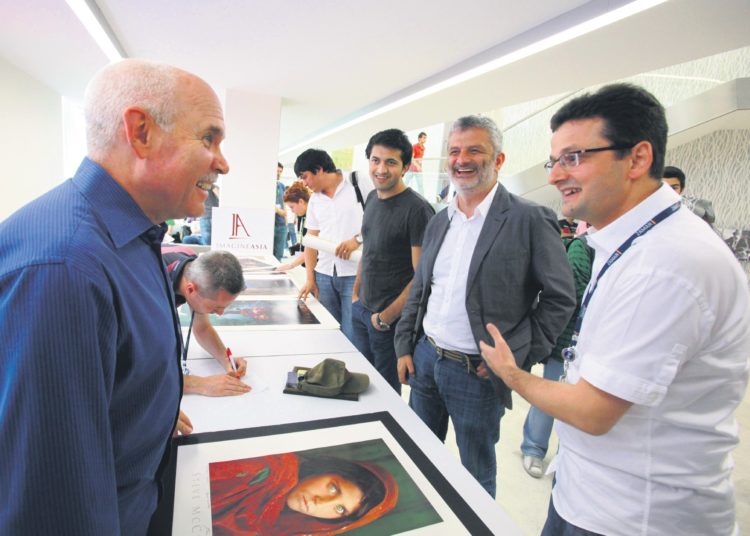Abdullah Bozkurt/Stockholm
Turkish authorities listed the visit to the US of a top art director who worked for a newspaper that was critical of the Turkish government and his invitations to US journalists and graphic designers to speak at a page design conference in Turkey as criminal evidence against him.
According to court papers obtained by Nordic Monitor, Fevzi Yazıcı, the jailed art director of the now-closed-down Zaman daily, a critical newspaper that was the most highly circulated paper in Turkey, was questioned about his visits to the US, where he had participated in various media conferences and served as a judge in a competition run by the Society for News Design (SND).
Turkish authorities also investigated Yazıcı’s guests, US journalists and art directors who came to Turkey to deliver speeches and give lectures at a seminar organized sponsored by the Zaman daily under the umbrella of the +1 Design Days. The group photos taken during these seminars and plane tickets issued for experts in newspaper design, including art directors from the Boston Globe and The New York Times, were collected as criminal evidence from Yazıcı’s home.
During his interrogation, police presented the so-called evidence and asked Yazıcı to explain what it meant. “I go to America every year for the annual conference of the Society for News Design,” he told the police, adding that he was in the US in 2015 to serve as a judge in “The Best of Newspaper Design™ Creative Competition. He said he had stayed at a hotel arranged by the SND near the US Capitol.
Fevzi Yazıcı’s interrogation revealed Turkish authorities looked into the visits of American journalists to Turkey as part of a criminal investigation:
Yazıcı and his team of designers at Zaman led their field for a decade, winning dozens of awards in SND competitions with their designs. Recognized for his work, Yazıcı was also selected to serve on a jury for the SND, the world’s most prestigious institution in the field of newspaper design that includes the world’s leading newspaper and magazine editors, art directors and professors from respected universities around the world.
Zaman had come under government pressure when it started publishing documents from the 2013 corruption probes that incriminated then-prime minister and current President Recep Tayyip Erdoğan, his family members and his inner circle. Erdoğan launched a campaign against the newspaper, asking his supporters to drop their subscriptions and exerting pressure on the daily’s advertisers. That actually helped the daily to increase its sales to 1.2 million copies a day, although its revenue from ads decreased under government pressure.
The government orchestrated a bogus criminal case against the newspaper in 2014, and the paper’s editor-in-chief, Ekrem Dumanlı, was detained in December 2014 and later released pending trial. The government seized the paper in March 2016 on a complaint filed by an al-Qaeda-affiliated, pro-Erdoğan group that claimed the paper had defamed the jihadist group in articles and op-ed pieces. After the government takeover, the paper was turned into a government mouthpiece overnight, with chief editors immediately dismissed and government loyalists brought in to run the publication. Circulation dropped to 4,000 in a week after a major reader backlash, and the government shut it down in July 2016, wiping out decades of work in the newspaper’s archives and taking down its website.
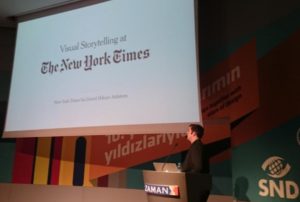
Many journalists who had worked for Zaman were charged by the government on dubious evidence, and Yazıcı was one of those who were imprisoned on July 27, 2016 with no evidence of any criminal activity as part of an unprecedented crackdown on critical journalists and independent media outlets in Turkey. In a highly unusual move, he was taken to İstanbul police headquarters from Silivri Prison on December 8, 2016 and questioned again, this time about the alleged evidence collected from his home.
Copies of plane tickets issued for Chris Courtney, a veteran art director in the US; Maryanne Golon, director of photography at The Washington Post; Wilson Andrews, deputy editor of the graphics department of The New York Times; and others were entered as criminal evidence in the case file against Yazıcı.
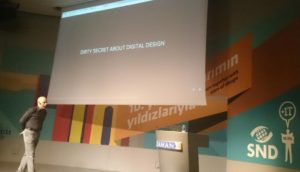
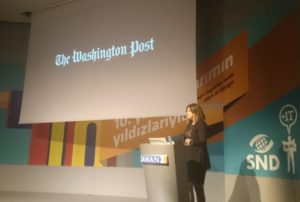

Yazıcı was the creator of the annual “+1 Newspaper Design Days,” which aimed to train young and aspiring art lovers who wanted to work in newspaper design: He brought top notch designers and art and graphic designers from the world’s leading publications such as the Boston Globe, The New York Times, The Washington Post, The Guardian and National Geographic to Turkey to lecture at seminars attended by talented students who were considered to be future page designers.
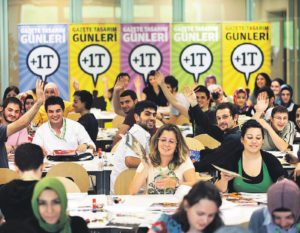
Yazıcı had worked at Zaman for 13 years. He always had a passion for art, and that is why he chose to study at the graphics department in Mimar Sinan University’s faculty of fine arts. In his defense he described himself as an artist who tried to raise the standard of page design at the newspaper to world class. Although he had no role in the editorial policy of the newspaper, he was accused of running articles critical of the government. His membership in a journalists union that had a critical stance against government policies was another piece of evidence listed against him.
Fevzi Yazıcı, art director, and his deputy Selim Şimşiroğlu, visited the US in 2015 to meet with their colleagues. Their trip was listed as criminal evidence against them in Turkey.
Yazıcı stood trial on terrorism and coup charges due to the daily’s affiliation with the Gülen movement, accused by the Turkish government of masterminding a failed coup in July 2016. The movement, a faith-based group inspired by Turkish cleric Fethullah Gülen, strongly denies any involvement in the failed coup.
Along with five other journalists, he was given an aggravated life sentence in February 2018 on charges of attempting to overturn the constitutional order. At the end of a retrial in November 2019 after the Supreme Court of Appeals reversed the verdicts given the six journalists by a lower court, Yazıcı was sentenced to 11 years, three months in prison on charges of membership in a terrorist organization.
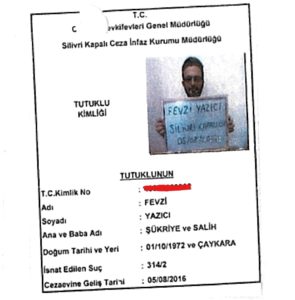
The artwork created by Yazıcı in his prison cell in Turkey has won a pair of Awards of Excellence from the SND 42nd Best of Print News Design Creative Competition. His artwork was featured across a three-page spread titled “Art of Darkness” published in The Washington Post in May 2020.
“The award-winning entries feature several of his illustrations drawn in his dimly lit cell,” said the SND in its press release, adding that Sunday, April 18 “marked his 1,216th day in solitary confinement.”
Forty works of art by Yazıcı, created mostly in prison, were displayed at the Yeh Art Gallery in New York lin 2020. The exhibition included drawings, typographies and notes produced before and during his incarceration in İstanbul.
Turkey is the biggest jailer of journalists in the world. The most recent figures documented by the Stockholm Center for Freedom (SCF) show that 172 journalists and media workers were in jail as of June 2021. Detention warrants are outstanding for 167 journalists who live in exile or remain at large in Turkey.

